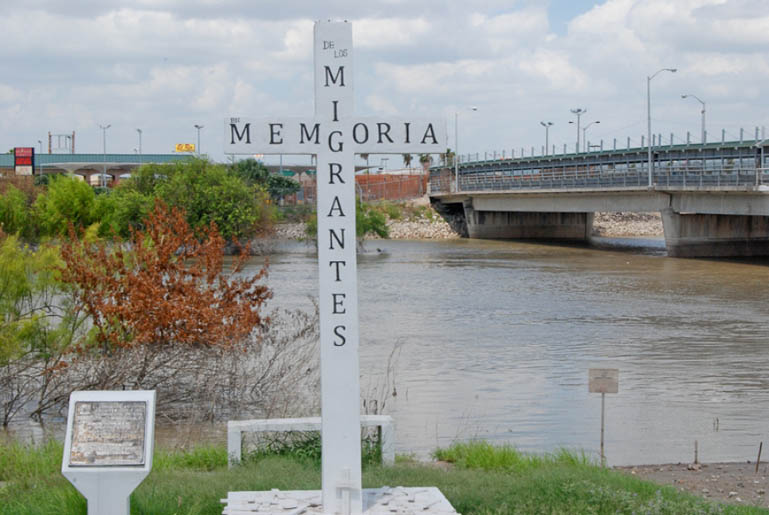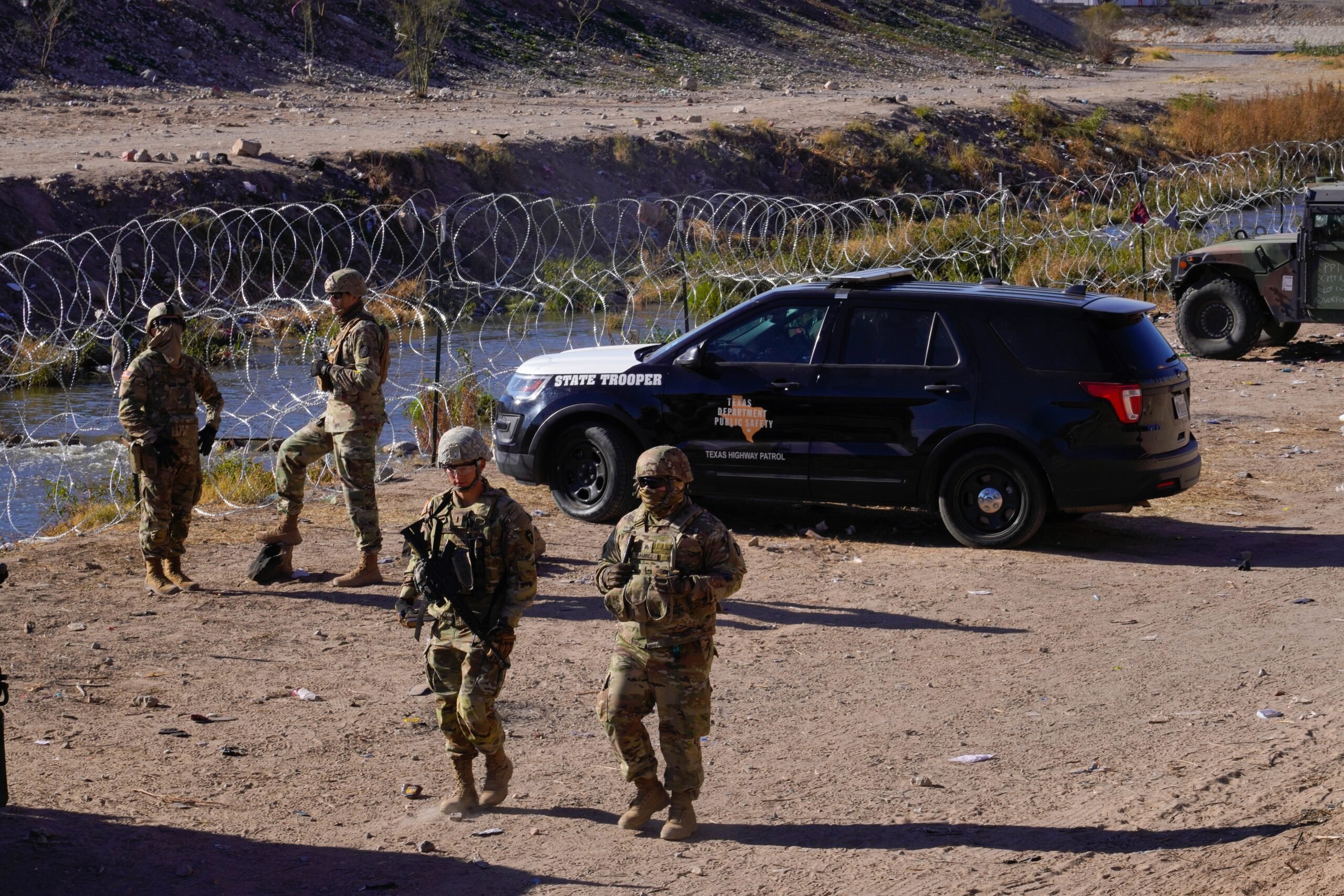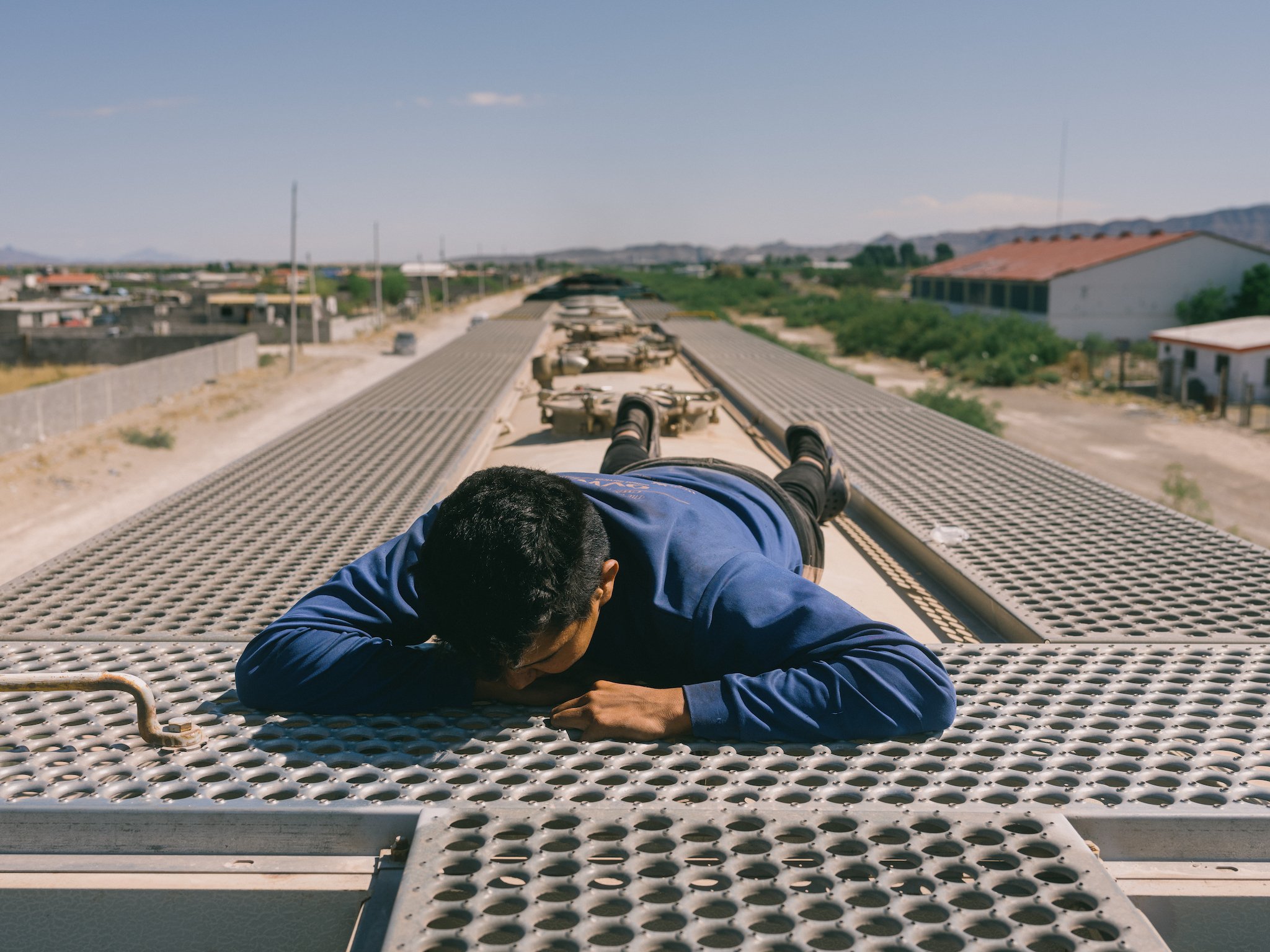
As Honduras Unravels, U.S. Struggles to Cope with Refugees

Above: A memorial to fallen migrants at the edge of the Rio Grande in Reynosa, Mexico.
On Saturday a group of 61 men, women and children walked across the Hidalgo International Bridge near McAllen to seek political asylum. At least 48 of the immigrants were fleeing Honduras, which has the highest murder rate in the world.
The men, women and children who arrived in the Rio Grande Valley on Saturday had been on a weeks-long odyssey through Mexico that began in mid-April. Their exodus from Honduras underscores growing problems in that country as well as the persecution of Central Americans as they make their way to the U.S. through Mexico.
Since a coup in 2009 of the democratically-elected President Manuel Zelaya, the country of 8 million has come unraveled. Crime has skyrocketed and the country now has the greatest income inequality in Latin America. Increasingly, Hondurans are fleeing the country for safer ground.
But many never reach their destination. In Mexico, Hondurans and other Central Americans are often beaten, raped, kidnapped or even killed by police and organized crime members especially while riding on top of the freight train north, known as “The Beast.” In early April, a group of Hondurans who had lost legs and arms after falling or being pushed from trains in Mexico requested an audience with Mexican president Enrique Peña Nieto. The dozen men from a group called the Association of Disabled Returning Migrants said they represented 452 mutilated migrants from Honduras, and several more from other Central American countries. The men were rebuffed by Peña Nieto but were allowed to address the Mexican Senate where they asked for visas to travel safely through Mexico and an end to the persecution of migrants. “We have hit bottom,” said Jose Luis Hernandez, leader of the group, according to the Associated Press. “It is no longer even news when two people die on ‘The Beast,’ or that somebody fell under the train and lost his legs.”
A few weeks after the group’s plea to the Senate, a thousand Central American migrants, Catholic priests, activists and reporters began the Viacrucis del Migrante—via crusis is Latin for “stations of the cross”— on April 15 marching from the southern border of Mexico to Mexico City to protest the cruel treatment of Central American migrants. But instead of stopping the protest at the capital it swelled to at least 1,500 with more Central American migrants joining after they were barred by the railway companies from riding The Beast north. The government also began a massive roundup of Central American migrants, many of whom were reportedly beaten, arrested and deported.
A core group of about 400 protesters kept marching north into the border state of Tamaulipas, one of the most dangerous regions of Mexico. They arrived on the outskirts of the border city of Reynosa on May 2, where gun battles were raging among the the military and splinter groups of the Gulf Cartel. The city is in the midst of its worst episode of violence since 2010 when the Zetas split from the Gulf Cartel. Most left for Mexico City the next day, but 61 migrants—the majority of them Hondurans—chose to cross the Hidalgo International Bridge to ask for asylum. Their chances of getting it are slim; U.S. asylum law doesn’t recognize poverty and violence as credible claims for asylum. In 2013, 70,658 Hondurans were deported from the United States and Mexico—nearly twice the number of Hondurans deported in 2011, according to Aracely Romero of the Center for Returned Migrant Services in Honduras.
Without a lawyer it’s also nearly impossible to win asylum. Carlos Spector, an El Paso immigration attorney, who specializes in political asylum cases, has volunteered to help the asylum seekers. Spector, who founded a nonprofit called “Mexicans in Exile,” says the group has a good chance of winning because they’re part of a political movement. “They’re fleeing authorized crime—gangs in complicity with the state who are persecuting them,” he says. “This is one of the strongest cases I’ve seen in a decade.”


